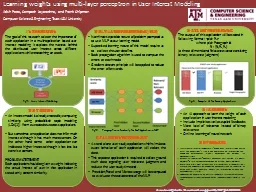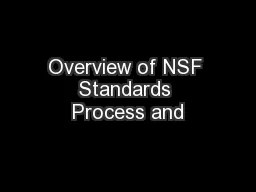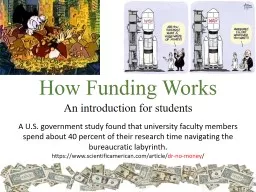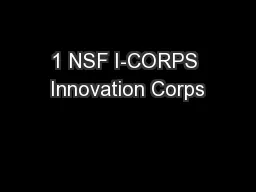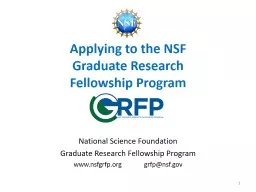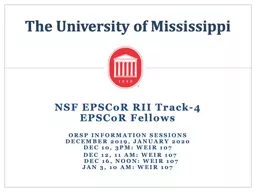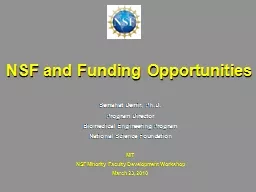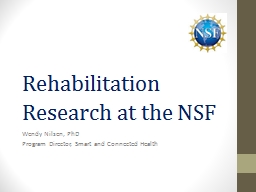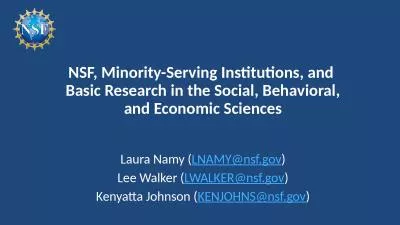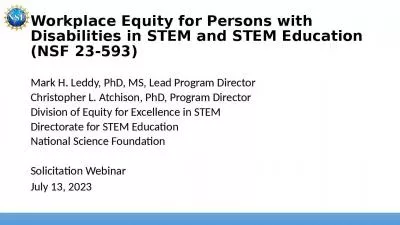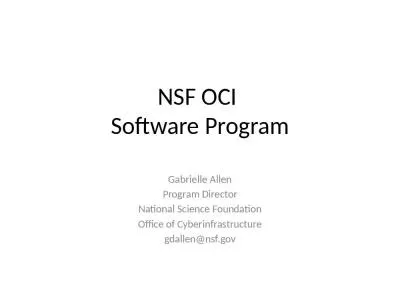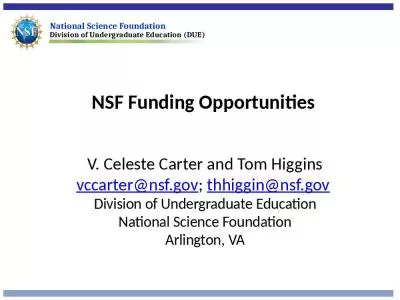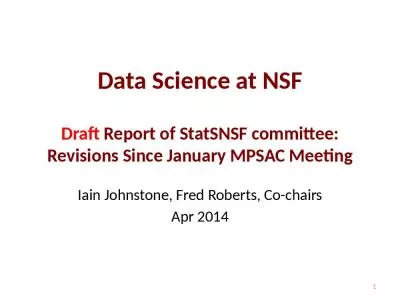PPT-Acknowledgements : This research is supported by NSF grant 0938074
Author : lois-ondreau | Published Date : 2019-12-18
Acknowledgements This research is supported by NSF grant 0938074 INTRODUCTION MULTI LAYER PERCEPTRONS MLP DATA SET FOR TRAINING Learning weights using multilayer
Presentation Embed Code
Download Presentation
Download Presentation The PPT/PDF document "Acknowledgements : This research is supp..." is the property of its rightful owner. Permission is granted to download and print the materials on this website for personal, non-commercial use only, and to display it on your personal computer provided you do not modify the materials and that you retain all copyright notices contained in the materials. By downloading content from our website, you accept the terms of this agreement.
Acknowledgements : This research is supported by NSF grant 0938074: Transcript
Acknowledgements This research is supported by NSF grant 0938074 INTRODUCTION MULTI LAYER PERCEPTRONS MLP DATA SET FOR TRAINING Learning weights using multilayer perceptron in User Interest Modeling. 3 years of funding: . $30k/year as stipend. $10,500/year for tuition. $1,000 one-time international travel allowance. UofM. covers the remainder of tuition, as well as benefits. Do not have to take the 3 years of funding right away—just have to all funding within 5 years. (CAREER) Award Outreach Workshop. April . 26, 2011. http://. projectgro.osu.edu. /CAREERworkshop11.pptx. A word from our sponsors…. Office of Research Training, Education, and Communication (ORTEC). Joint Committee Formation. Sustainable Water Contact Products Stakeholder Meeting. October 30, 2012. Session Overview. Brief Overview of NSF International. ANSI and NSF Standards Development Process. How Funding Works. An introduction for students. A U.S. government study found that university faculty members spend about 40 percent of their research time navigating the bureaucratic labyrinth. (why we are always so busy). Evidence-Based Approach . to . Reducing . Risk. . of University Tech Transfer Spinouts. . Lou Bucelli, Serial Entrepreneur, . NSF I-Corps Mentor . The views expressed in this material are those of the author and do not necessarily reflect the views of the National Science Foundation. Fellowship Program. National Science Foundation. Graduate Research Fellowship Program. www.nsfgrfp.org grfp@nsf.gov . 1. PART 1:. Program Information. 2. Independent federal agency created in 1950. EPSCoR. Fellows. ORSP Information Sessions . December 2019, January 2020. Dec 10, 3pM: Weir 107. Dec 12, 11 am: Weir 107. Dec 16, noon: Weir 107. Jan 3, 10 am: Weir 107. The University of Mississippi. Semahat Demir, Ph.D. . Program Director. Biomedical Engineering Program. National Science Foundation. MIT. NSF Minority Faculty Development Workshop. March . 23, . 2010. NSF, Cross-directorate and Interagency Activities. Wendy Nilsen, PhD. Program Director, Smart and Connected Health. Background NSF. Rehabilitation research can be found in many areas in NSF and within the mission of several cross-directorate initiatives . ). Lee Walker (. LWALKER@nsf.gov. ). Kenyatta Johnson (. KENJOHNS@nsf.gov. ). NSF, Minority-Serving Institutions, and . Basic Research in the Social, Behavioral, and Economic Sciences. Introduction to SBE. Mark H. Leddy, PhD, MS, Lead Program Director. Christopher L. Atchison, PhD, Program Director. Division of Equity for Excellence in STEM. Directorate for STEM Education. National Science Foundation. Solicitation Webinar. Gabrielle Allen. Program Director. National Science Foundation. Office of Cyberinfrastructure. gdallen@nsf.gov. Software as Infrastructure. Software is an integral enabler . across all science and engineering disciplines . vccarter@nsf.gov. ; . thhiggin@nsf.gov. . Division of Undergraduate Education. National Science Foundation. Arlington, VA. NSF Funding . Opportunities. . . NSF . by the Numbers . . . $7.3 billion FY 2015 appropriations (does not include... . Report of . StatSNSF. committee:. Revisions Since January MPSAC Meeting. Iain Johnstone, Fred Roberts, Co-chairs. Apr 2014. 1. 1. Introduction. Subcommittee of MPS AC. Charged by MPS AD [. w. . support of all .
Download Document
Here is the link to download the presentation.
"Acknowledgements : This research is supported by NSF grant 0938074"The content belongs to its owner. You may download and print it for personal use, without modification, and keep all copyright notices. By downloading, you agree to these terms.
Related Documents

